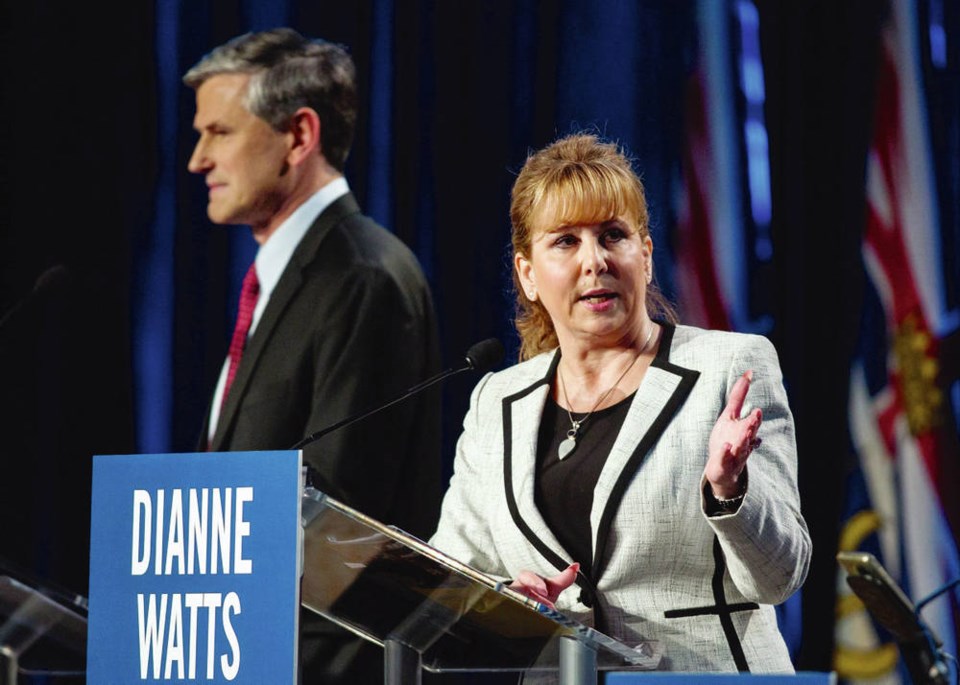Following a judicial recount in West Vancouver-Sea to Sky, where the Liberals narrowly defeated the Green candidate by 60 votes, the results of last month’s election are final.
The NDP took 57 seats, the Liberals 28, and the Greens, two.
Let’s not bother with the B.C. Conservatives. In the seven elections between 1991 and 2017, this demented crew averaged a vote count of 1.2 per cent (we still don’t have the 2020 score), and won a grand total of 0.0 seats.
The real question now, is whither the Liberal party? It’s widely recognized, as it should have been before he was chosen leader, that Andrew Wilkinson was never the man for the job.
He seems a decent sort, but lacks the killer instinct. The search is on for his replacement.
But what kind of replacement? Does the party need an axe wielder?
Certainly they’re not going to find someone who can outcompete John Horgan in geniality.
If she wants it, Dianne Watts, former mayor of Surrey, is the obvious choice. She’s not a fire breather, but neither is she a wilting lily. She has the toughness that Wilkinson lacked.
And Surrey is the third largest municipality in B.C. You don’t run a local government that size without learning how to fight your corner.
But after that, the challenge grows. This election was dominated by COVID-19.
The next election will centre on efforts to re-ignite the economy and manage down the debt.
The problem is, how do you frame such a platform when the two main objectives are mutually incompatible?
Lower business taxes? Yes, but at least in the short term, that drives up the deficit.
Tax the rich? OK, but how does that help the economy?
Cut spending? When someone asked John Dillinger why he robbed banks, he replied, “because that’s where the money is.”
If you’re going to reduce the size of government, health and education are where the money is. But Dillinger died at 31, shot four times in the back and head.
That’s exactly what would happen to any political party that tried to ransack health care.
I think it comes down to this: The NDP will hold the progressive vote.
The only strategy I can see for the Liberals is to mount some form of populist campaign. But what would that look like in our corner of the world?
There are lots of British Columbians who don’t like hauling down statues, defunding the police, trying to halt the building of pipelines, and pursuing a climate agenda that means a lingering death for the resource industry.
However, are there enough of them? There might be, if the NDP abandon the centre aisle and embrace an overly activist agenda. That’s what happened in the 1990s.
Yet this time around, I wouldn’t bet on it. Horgan isn’t that kind of guy.
Even more, with a whopping majority, he can run a middle-of-the-road government and ignore protests from the left.
Nevertheless, that looks like the only practical option the Liberals have. In the aftermath of a ruinous epidemic, standard right-wing policies won’t win over a traumatized electorate.
In such an environment, the Liberals can’t regain power preaching fiscal discipline and leaner government. They will need the NDP to self-destruct, unlikely as that may appear.



